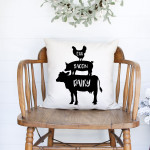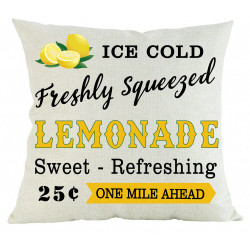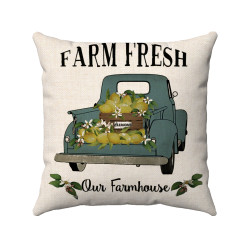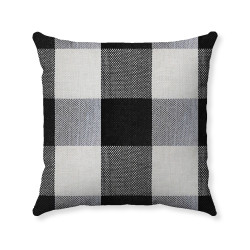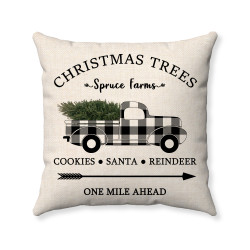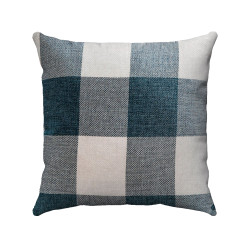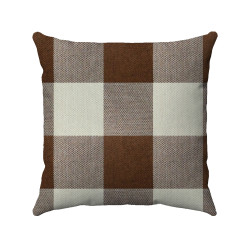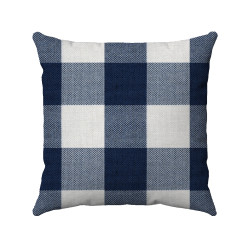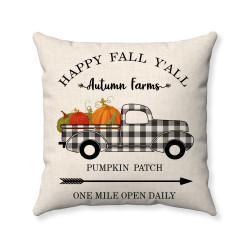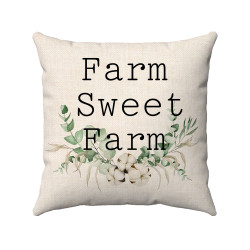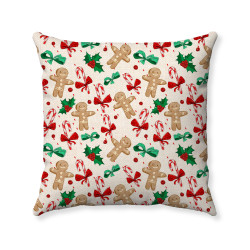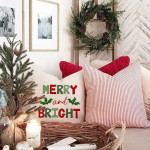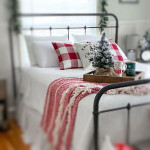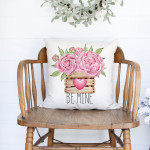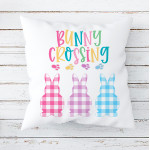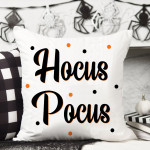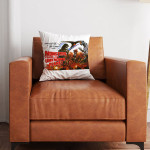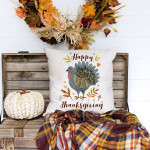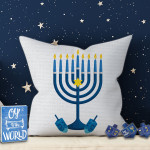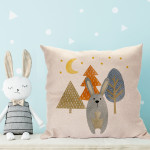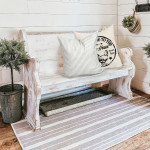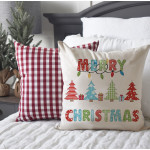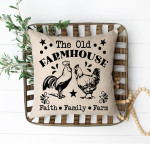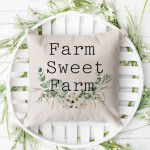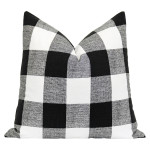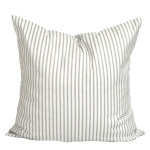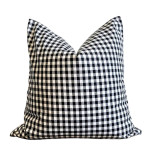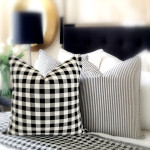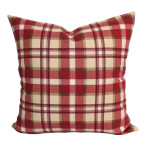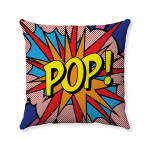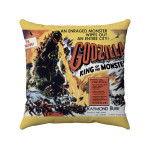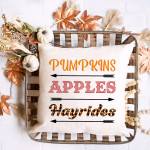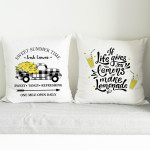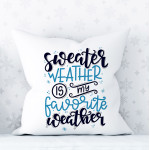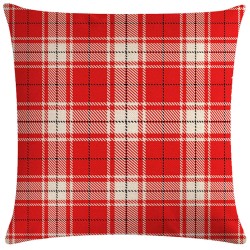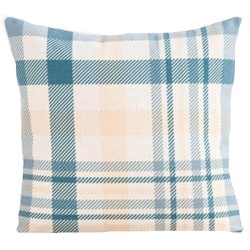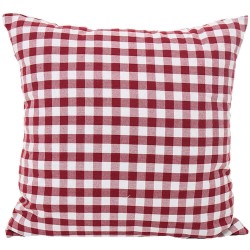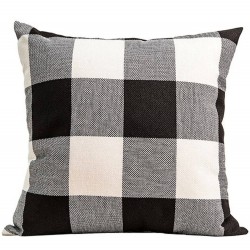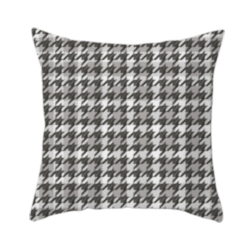Demystifying Plaid, Gingham, Buffalo Check, Flannel and Tartan
Plaid is a very popular fabric. Show just about anyone a multicolored fabric with alternating squares or checkered pattern and intersecting lines at right angles and they will instantly recognize the fabric as plaid. Nobody really knows the origins of plaid other than it was a traditional cloth originating in the Scottish Highlands.
Plaid however has many varieties. At Pillow Frenzy, we offer many varieties of plaid pillows and cases.
Plaid however has many varieties. At Pillow Frenzy, we offer many varieties of plaid pillows and cases.
Tartan
Tartan is actually what most people consider plaid. The Tartan pattern is a color heavy pattern with crisscrossing stripes forming uneven checks.
Modern Tartan originated in the Scottish Highlands around 300 AD. Tartan fabric is endemic in Scottish Highland culture. Tartan patterns were used to signify one belonging to a specific Scottish clan.
Best known as the fabric used in Scottish kilts, today Tartan has become a staple of the farmhouse style. Tartan is a heavy colored fabric ideal for winter attire and decor. Tartan is commonly used in nearly all clothing styles and home decor. Tartan is a winter pattern and often associated with Christmas celebration. At Pillow Frenzy, our Tartan patterned decorative throw pillows are an excellent choice for the foundation of your winter decor.
Modern Tartan originated in the Scottish Highlands around 300 AD. Tartan fabric is endemic in Scottish Highland culture. Tartan patterns were used to signify one belonging to a specific Scottish clan.
Best known as the fabric used in Scottish kilts, today Tartan has become a staple of the farmhouse style. Tartan is a heavy colored fabric ideal for winter attire and decor. Tartan is commonly used in nearly all clothing styles and home decor. Tartan is a winter pattern and often associated with Christmas celebration. At Pillow Frenzy, our Tartan patterned decorative throw pillows are an excellent choice for the foundation of your winter decor.
Madras
Madras is is a brightly colored vibrant plaid similar to tartan. The Madras pattern has crisscrossing stripes of multiple colors to form uneven checks.
Originating in East India, Madras was considered a working class or peasant fabric. Sold in America as early as 1897 by Sears Roebuck & Company catalog, Madras shirts were popularized by Brooks Brothers in the early 1960's. Today Madras has become a staple of the "preppy" look and a favorite in Ivy League culture..
Madras is considered a summer fabric. Madras is commonly used in summer shirts, sport coats and dresses. In the home consider Madras as Tartan's summer brother(or sister). Madras patterns work nicely with decorative throw pillows and the bright colors can transform a room from a cozy winter retreat to a bright summer oasis.
Originating in East India, Madras was considered a working class or peasant fabric. Sold in America as early as 1897 by Sears Roebuck & Company catalog, Madras shirts were popularized by Brooks Brothers in the early 1960's. Today Madras has become a staple of the "preppy" look and a favorite in Ivy League culture..
Madras is considered a summer fabric. Madras is commonly used in summer shirts, sport coats and dresses. In the home consider Madras as Tartan's summer brother(or sister). Madras patterns work nicely with decorative throw pillows and the bright colors can transform a room from a cozy winter retreat to a bright summer oasis.
Gingham
Gingham is a smaller check pattern made with symmetrical overlapping stripes in an even checkered pattern. Gingham is usually two colors, typically brighter colors and white. The overlapping weave creates the appearance of darker and lighter colored checks.
Best known as the fabric used for Dorothy's dress in the Wizard of OZ, gingham has a long history. Gingham as we know it first came into western use in the early 17th century. In America, gingham has been associated with utilitarian wear, mod culture and 50's housewives.
Today Gingham is considered a traditional pattern often used in farmhouse decor. Gingham is typically used as a spring and summer fabric due to it's brighter colors and often used on lightweight fabrics. Common uses for gingham are shirts, dresses, kitchen table cloths, kitchen curtains and throw pillow or throw pillow covers. A few gingham decorative throw pillows are perfect as part fo your spring and summer decor.
Best known as the fabric used for Dorothy's dress in the Wizard of OZ, gingham has a long history. Gingham as we know it first came into western use in the early 17th century. In America, gingham has been associated with utilitarian wear, mod culture and 50's housewives.
Today Gingham is considered a traditional pattern often used in farmhouse decor. Gingham is typically used as a spring and summer fabric due to it's brighter colors and often used on lightweight fabrics. Common uses for gingham are shirts, dresses, kitchen table cloths, kitchen curtains and throw pillow or throw pillow covers. A few gingham decorative throw pillows are perfect as part fo your spring and summer decor.
Buffalo Check
Buffalo Check is very similar to gingham. Where gingham typically has smaller checks, buffalo check has fairly large checks. Buffalo check originated in the 1850's when Woolrich Woolen Mills created the Buffalo Check shirt.
Popularized by Paul Bunyan stories and Lumberjacks, the Buffalo Check design has been popular with sportsmen and outdoors men for over 150 years. In the home, Buffalo Check is commonly found in living rooms and bedrooms seeking a farmhouse or cabin look. Buffalo Check is typically a fall and winter fabric. A few Buffalo Check decorative throw pillows can turn any room into a cozy comfy atmosphere.
Popularized by Paul Bunyan stories and Lumberjacks, the Buffalo Check design has been popular with sportsmen and outdoors men for over 150 years. In the home, Buffalo Check is commonly found in living rooms and bedrooms seeking a farmhouse or cabin look. Buffalo Check is typically a fall and winter fabric. A few Buffalo Check decorative throw pillows can turn any room into a cozy comfy atmosphere.
But What About Flannel?
Flannel is a soft woven fabric originally made from wool. Flannel is often "brushed" to give it a softer "fuzzy" feeling. Flannel has been popularized throughout American history from Lumberjack Shirts to the 1990's grunge trend. Because of the associations with grunge and Lumberjack shirts, flannel is often synonymously used with plaid.Windowpane
Named after the traditional windows, the windowpane check has thinner widely spaced criscrrossing lines. Often used on mens suits, dress shirts and bedding. Throw pillows made from this pattern are ideal for airy bedrooms, open concept living rooms and minimalistic decor.
Tattersall
An 18th century fabric created by Tattersall's horse market. Originaly used in horse blankets, tattersall became very popular within equestrian sports. The tattersall pattern is a woven check or plaid pattern conisting regularly-spaced thin, even vertical warp stripes, repeated horizontally in the weft. The stripes are typically darker on a light background.
The tattersall pattern is a staple of british country living style. Traditional shirts of horseback riders in formal riding attire typically are designed with the tattersall patter, Today tattersall is a common pattern, often woven in cotton, particularly in flannel, used for shirts or waistcoats. Tattersall shirts, along with gingham, are often worn in country attire, for example in combination with tweed suits and jackets. Traditional shirts of this cloth are often used by horseback riders in formal riding attire, and adorned with a stock tie.
The tattersall pattern is a staple of british country living style. Traditional shirts of horseback riders in formal riding attire typically are designed with the tattersall patter, Today tattersall is a common pattern, often woven in cotton, particularly in flannel, used for shirts or waistcoats. Tattersall shirts, along with gingham, are often worn in country attire, for example in combination with tweed suits and jackets. Traditional shirts of this cloth are often used by horseback riders in formal riding attire, and adorned with a stock tie.

